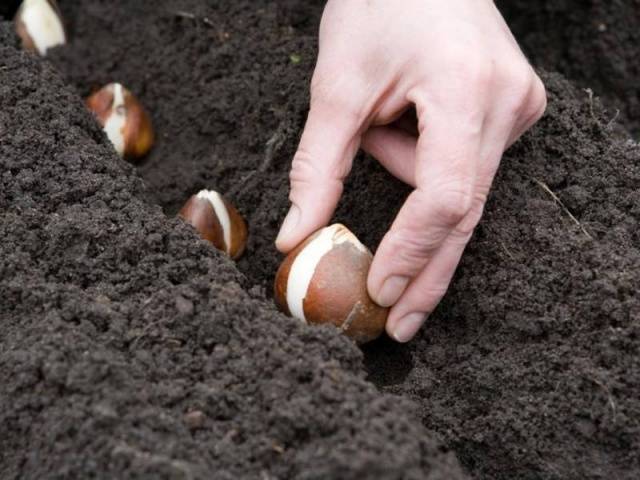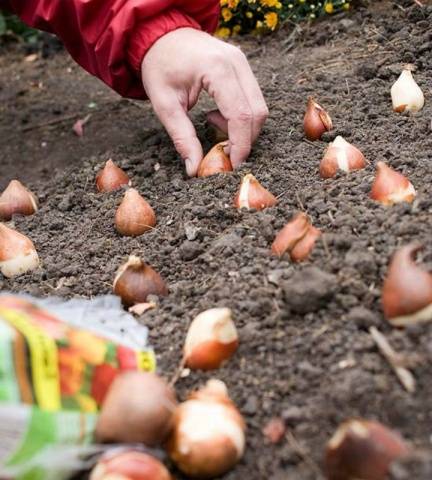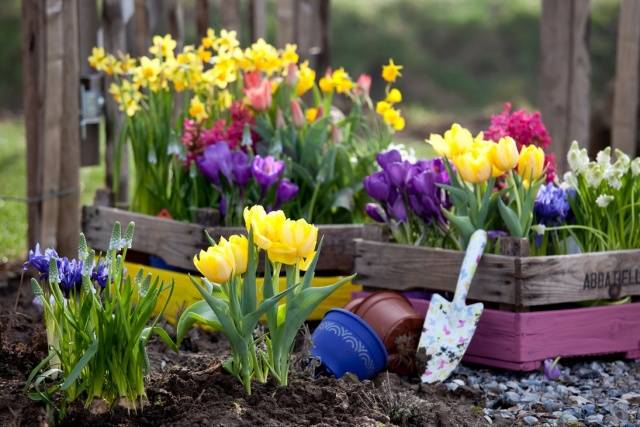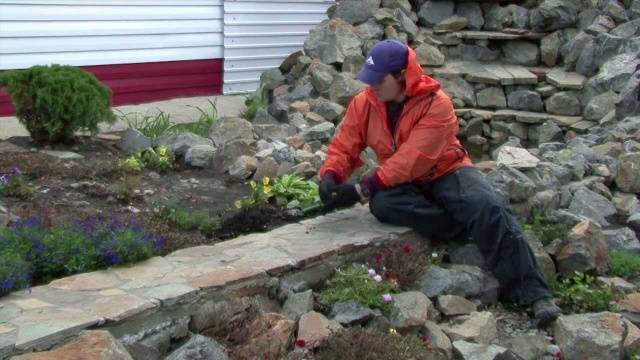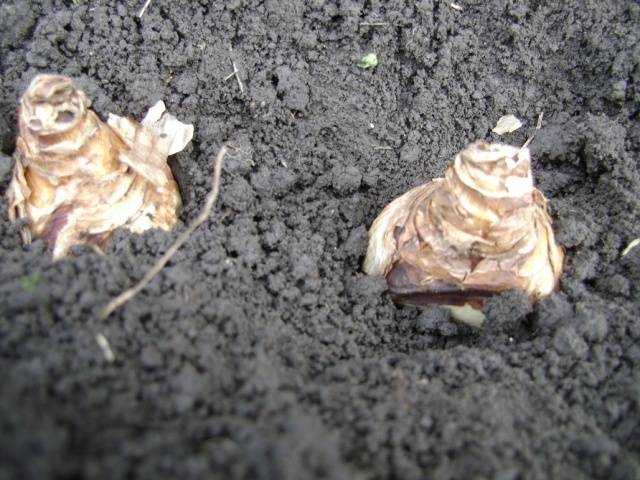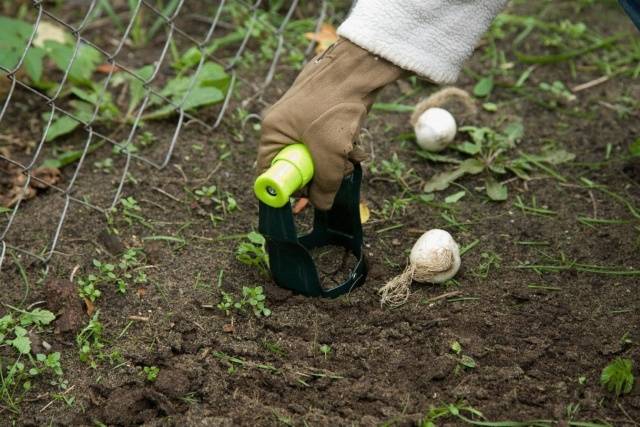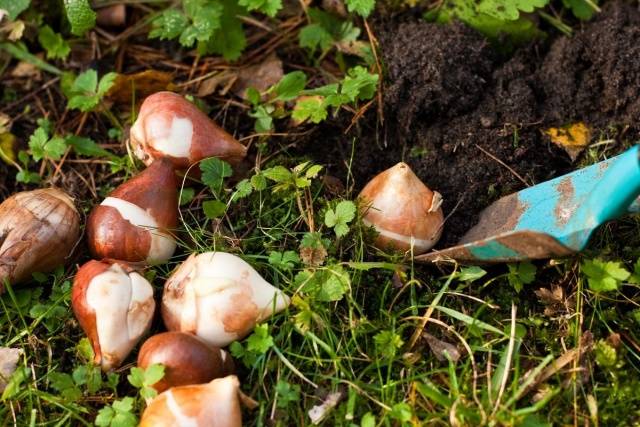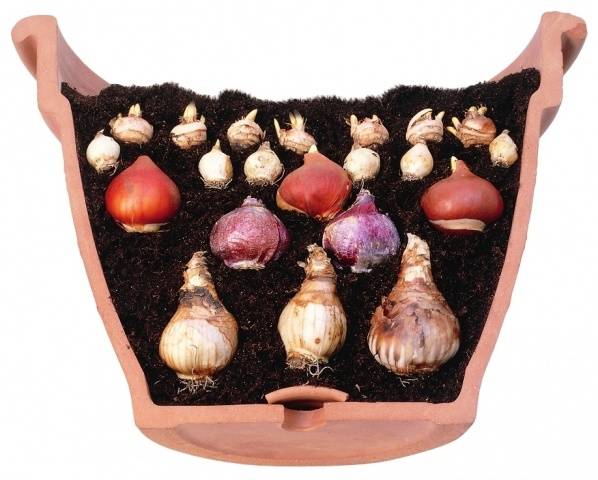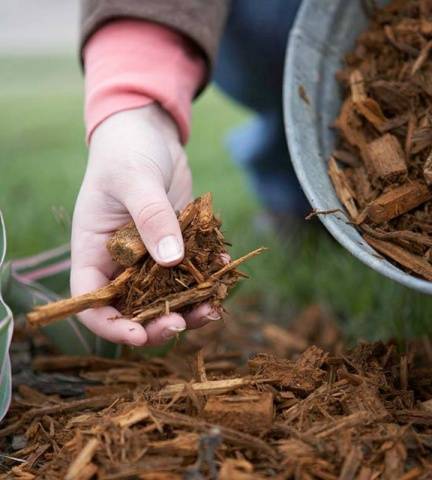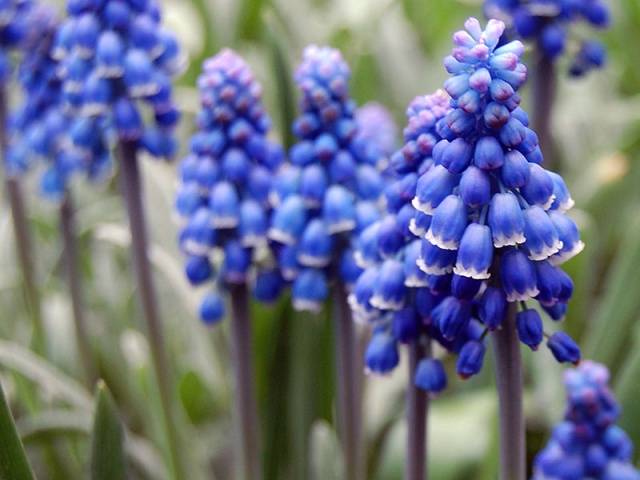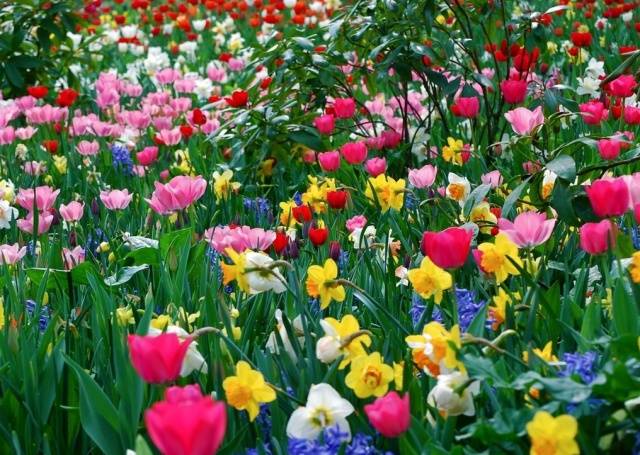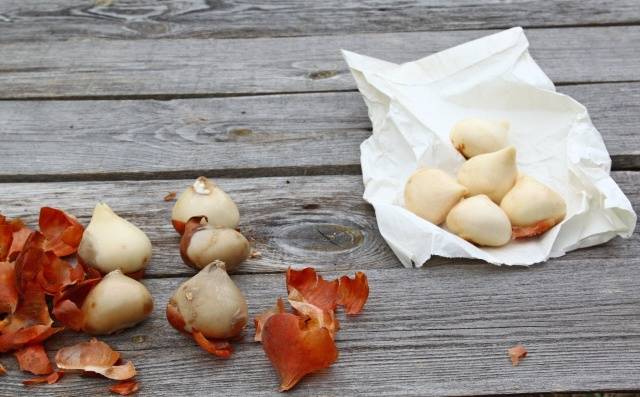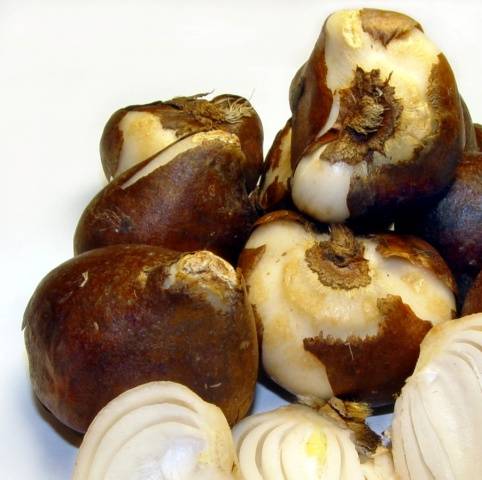Content
Autumn is often accompanied by heavy rains and gray days of the outgoing summer. To brighten up the upcoming nostalgia for the warm season, many summer residents decorate their flower beds and gardens with blooming autumn flowers. They are planted in summer, making them an excellent decoration for gardens by autumn. But what bulbous flowers are planted in autumn?
Those that bloom in early spring. Planting in the fall will allow the plants to wake up as the snow melts. While other flowering plants prepare for the winter cold and dormant conditions, their bulbous counterparts begin preparing for the early spring awakening. Many novice growers prefer bulbous flowers, as they are less whimsical. This article will focus on the benefits of autumn planting, on the features of the choice of soil and planting material.
The advantages of planting flowers in autumn
Each period for planting flowers has its own advantages. Further, a number of advantages of autumn planting will be given:
- In the fall, there is less hassle in the garden. Bulbous flowers can be planted after harvesting and cleaning the garden. Thanks to this, the work can be done in detail and measuredly, which cannot be said about spring, since during this period, in addition to planting flowers, it is necessary to prepare the soil for planting vegetables, sow and grow seedlings.
- In the fall, quality planting material can be bought on sale at better prices.
- The stratification of bulbs and plant seeds is natural in autumn. So, you do not have to additionally soak and keep the planting material in the refrigerator.
- Plants are easier to transplant in the cool season. The number of pests and pathogenic bacteria decreases with the onset of autumn cold weather. The still warm soil allows the bulbs to take root before frost, which helps the flowers germinate with the first warmth of spring.
- Return frosts are not terrible for bulbs of spring flowering plants that have hardened over the winter.
- With an autumn planting, the growth of flowers in the spring period begins earlier, and, accordingly, they will delight with flowering in early spring.
- With the seasonal fall rains, you can free yourself from watering the bulbous flowers.
What flowers are planted in the autumn
In the fall, bulbous flowers are divided, planted and planted. Among them:
- Crocuses.
- Hyacinths.
- Tulips.
- Muscari.
- Phlox paniculata.
- Pushkinia.
- Scylla.
- Lilies.
- Sedum.
- Astilba.
- Peonies.
- Evening primrose shrub.
- Adonis.
- Clematis.
- Aconite.
- Rudbeckia.
- Lupine.
- Brunerra large-leaved.
- Echinacea
Annuals, planted in autumn, bloom better and longer in spring. This is due to natural soil stratification.
When to plant bulbous flowering plants
Spring flowers from the bulbous family require a period of cold dormancy for flowering. So, from the second half of August to mid-September, the following bulbous flowers are planted:
- Crocuses.
- Astilbe.
- Daffodils.
- Muscari.
- Rudbeckia.
- Phlox.
- Pushkin.
- Solidago.
- Chionodox.
- Grouse or fritillaria.
In the last decade of September, lilies, tulips and daylilies can be planted. Second-class planting material will not germinate, so buy unsold low-quality bulbs with signs of drying out, rot and mold is not worth it. The best option is to purchase planting material from reliable sources such as nurseries, garden centers and catalogs with a good reputation.
Selection of place and soil
Bulbous plants bloom when the trees have not yet blossomed, so they can be planted under them. In flower compositions of rockeries and rock gardens, scillas or woodlands and crocuses look great.
The soil must be fertile. Water should not stagnate in it. Clay soil must be mixed with sand. In some cases, heavy clogged soil is drained. The soil should be fertilized and watered before planting flowering plants. If necessary, it is also compacted.
Landing features
Before planting, you need to inspect each bulb. In this case, the plants will bloom well in spring, they will not hurt. Damaged bulbs are treated in a solution of potassium permanganate. Damage sites also need to be treated with brilliant green. So that all flowers in the beds or flower beds do not get sick after you have planted them, do not use those bulbs that have traces of disease and rotting for planting.
You need to plant bulbous flowers at a certain depth, but it all depends on the type of plant. Although there is one general rule - the layer of earth should correspond to three diameters of the bulb. For example, the diameter of the planting material is 1 cm, then it must be sprinkled with earth by 3 cm.
The easiest way to plant bulbs is on the lawn. To do this, a layer of sod is simply removed and the bulbs are placed in the loosened soil, and then they are again covered with a layer of sod.
If you have to work with heavy soil, which is very compacted from rain, then sand should be added to the prepared hole before planting bulbous flowers in autumn, without reducing the planting depth. If it's a dry autumn, then the planted flower bulbs need to be watered abundantly, and then mulched. Fallen leaves or loose peat can serve as mulch.
A distance of 15–20 cm should be left between the bulbs. If you are planting large bulbs and they should be planted deep in the ground, this can be done not only by sprinkling with soil, but also by mulching and covering with spruce branches.
Therefore, after planting, they need to be covered with a greenhouse film. In the spring, you need to remove the film on time, as the bulbs can dry out.
Tulips are the least whimsical. The distance between the bulbs should be no more than 10 cm, while the burial depth should be equal to three bulb diameters.
In September
In the first decade of September, solidago, rudbeckia, astilde and phlox should be transplanted. Also, gardeners during this period share the bushes. In addition, disembarkation takes place in the first half of September. small-bulbous plants... These include chionodoxes, scyllas, crocuses, pushkinia and muscari.
In the second decade of the month, daffodils are planted, and a week later - hyacinths. Planting tulips falls on the last decade of September. The time of planting flowers must be observed. For example, if you plant daffodils in the third, and not in the second decade of the month, they will not develop roots, as a result of which the plants may not survive wintering.
In October
Tulips and hyacinths can be planted until mid-October. The hyacinths need to be planted deep in the ground - 17–20 cm, depending on the diameter of the bulb. To avoid waterlogging of the soil during heavy rains, the planting site of these plants should be covered with a film.
Tulips adapt well to damp and cold soil. Their planting depth varies between 15-18 cm, depending on the size of the bulbs. Please note that tulips planted in mid-October are easier to deal with diseases and viruses, such as variegation.
In November
At this time, only tulips can be planted, and then provided that the year turned out to be warm and this month the air temperature still does not fall below + 5C. Otherwise, the bulbs will not only slow down in growth, but may even die.
If you bought tulip bulbs late, you can plant them at home in a container for distillation.
When is it better to buy planting material
If you need to purchase planting material, it is best to do this just before planting. However, this is not always possible, since summer flower bulbs are sold at the end of winter, and in the future the owner of the planting material will have to take care of its safety.
If you purchased planting material in advance, then place it in peat or sand, and store it in a refrigerator or basement at a temperature not exceeding 7C.
These include crocuses, hyacinths, tulips and daffodils. Externally, the bulbs may look healthy, although if they were stored in a warehouse, then their shelf life has long expired.
So, this article covered the question of which bulbous flowers are planted in spring and how to do it. Adhering to the above recommendations, you can please your household with a beautiful flower bed in spring. In addition, we suggest you watch an additional instructive video on the topic:
